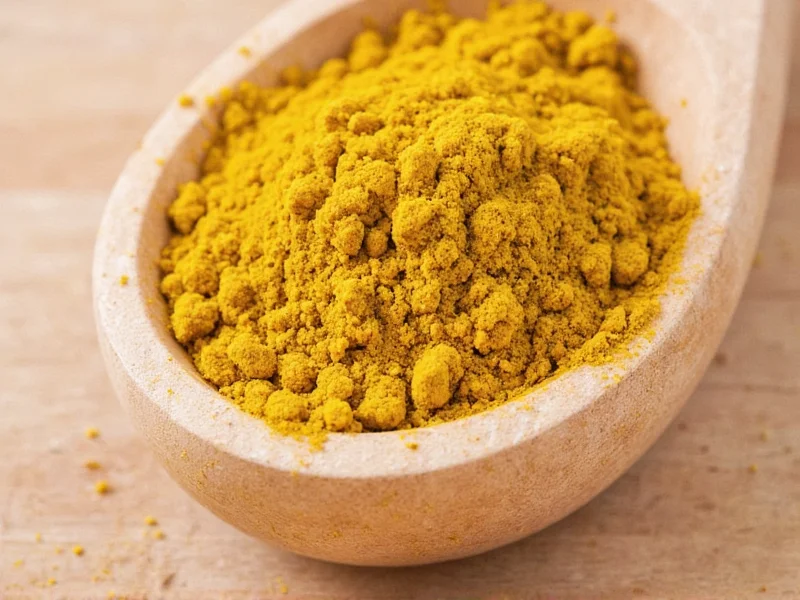The best substitutes for mustard powder are prepared yellow mustard (use 1 tablespoon for every 1 teaspoon of mustard powder), Dijon mustard (1.5 tablespoons per teaspoon of powder), or a mix of turmeric and vinegar (1/2 teaspoon turmeric + 1 teaspoon vinegar per teaspoon of powder). For dry rubs, use horseradish powder at a 1:1 ratio. Always adjust liquid content in recipes when using wet substitutes.
Running out of mustard powder mid-recipe doesn't have to ruin your cooking plans. As an experienced home chef who's tested countless substitutions in real kitchen scenarios, I've discovered reliable alternatives that maintain flavor integrity while accommodating what's actually in your pantry. Understanding the right replacement depends on your specific recipe and the flavor profile you're trying to achieve.
Why You Need the Right Mustard Powder Substitute
Mustard powder provides that distinctive tangy, slightly spicy kick in marinades, dressings, and dry rubs. Unlike prepared mustards, it dissolves completely without adding extra liquid. When you're missing this pantry staple, choosing the wrong substitute can throw off your recipe's balance. The key is matching both flavor and functional properties.
Top Mustard Powder Substitutes with Exact Ratios
Not all substitutes work equally well in every situation. Here's what actually works based on extensive kitchen testing:
1. Prepared Yellow Mustard (Best for Moist Recipes)
Use 1 tablespoon of yellow mustard for every 1 teaspoon of mustard powder. This works perfectly in meatloaf, salad dressings, and barbecue sauces where additional liquid won't affect texture. The vinegar content mimics mustard powder's tang, though the flavor is milder. Reduce other liquids in your recipe by 1 teaspoon per substitution to maintain consistency.
2. Dijon Mustard (Superior Flavor Replacement)
Substitute 1.5 tablespoons of Dijon mustard per teaspoon of mustard powder. Dijon's sharper flavor profile comes closest to mustard powder's intensity. Ideal for vinaigrettes, cheese sauces, and gourmet meat preparations. The slight wine notes enhance complex dishes but may overpower delicate recipes.
3. Turmeric and Vinegar Blend (Dry Rub Solution)
Mix 1/2 teaspoon turmeric with 1 teaspoon white vinegar or apple cider vinegar per teaspoon of mustard powder. This combination replicates both color and tang in dry spice rubs for meats. Turmeric provides the yellow hue while vinegar delivers the necessary acidity. Add a pinch of garlic powder to enhance complexity.
4. Horseradish Powder (Spicy Alternative)
Use horseradish powder at a 1:1 ratio for mustard powder in dry rubs and spice blends. It delivers similar heat with a different flavor profile—more sinus-clearing sharpness versus mustard's tang. Best for beef dishes and hearty stews where the flavor difference complements rather than competes.
5. Wasabi Powder (Unexpected Substitute)
Surprisingly effective at a 3:4 ratio (3/4 teaspoon wasabi powder per teaspoon of mustard powder). Wasabi's heat profile differs but works well in Asian-inspired marinades and dressings. The vibrant green color won't match, but the pungency serves a similar functional purpose in cutting through rich flavors.
| Substitute | Ratio | Best For | Liquid Adjustment |
|---|---|---|---|
| Yellow Mustard | 1 tbsp : 1 tsp powder | Meatloaf, dressings | Reduce liquids by 1 tsp |
| Dijon Mustard | 1.5 tbsp : 1 tsp powder | Vinaigrettes, cheese sauce | Reduce liquids by 1.5 tsp |
| Turmeric + Vinegar | 1/2 tsp + 1 tsp : 1 tsp powder | Dry rubs, spice blends | None needed |
| Horseradish Powder | 1:1 | Beef rubs, stews | None needed |
| Wasabi Powder | 3/4 tsp : 1 tsp powder | Asian marinades | None needed |
Special Considerations for Different Recipes
Certain dishes require tailored substitution approaches:
For Baking and Dry Mixes
When substituting in dry mixes like cornbread or biscuits, stick with dry alternatives. The turmeric-vinegar blend works if you dissolve it in your wet ingredients first. Horseradish powder maintains the dry consistency essential for proper rising.
In Marinades and Wet Mixtures
Dijon mustard shines here, adding both flavor and emulsifying properties. For every teaspoon of mustard powder called for, use 1.5 tablespoons Dijon and reduce oil by 1 teaspoon to maintain proper oil-to-acid ratio.
For Pickling and Preserving
Mustard powder's preservative qualities matter here. Use yellow mustard at a 2:1 ratio (2 tablespoons per teaspoon of powder) and add 1/4 teaspoon citric acid to maintain proper pH levels for safe preservation.
What Not to Use as Mustard Powder Substitutes
Avoid these common but problematic substitutions:
- Mayonnaise (lacks acidity, changes texture)
- Mustard seeds (require grinding and won't dissolve)
- Soy sauce (completely different flavor profile)
- Hot sauce (adds heat without the tang)
These alternatives fundamentally alter your dish rather than providing a true substitute.
Pro Tips for Perfect Substitution
Seasoned cooks know these advanced techniques make the difference:
- For complex dishes: Combine substitutes—use Dijon for flavor and a pinch of turmeric for color
- When time allows: Make your own mustard powder by drying prepared mustard on parchment paper at 170°F for 2-3 hours, then grinding
- For sensitive palates: Reduce any substitute by 25% when cooking for children or those who dislike strong flavors
- Flavor balancing: If your substitute makes the dish too mild, add 1/8 teaspoon cayenne; if too sharp, add 1/2 teaspoon honey
Understanding Mustard Powder's Role in Cooking
Mustard powder isn't just about heat—it emulsifies dressings, tenderizes meats through enzymatic action, and balances rich flavors. When substituting, consider which function matters most for your specific recipe. In cheese sauces, its emulsifying property prevents separation; in barbecue rubs, it's primarily for flavor. This understanding guides smarter substitution choices.











 浙公网安备
33010002000092号
浙公网安备
33010002000092号 浙B2-20120091-4
浙B2-20120091-4